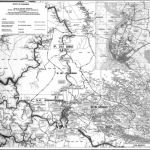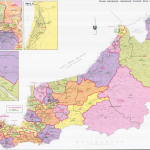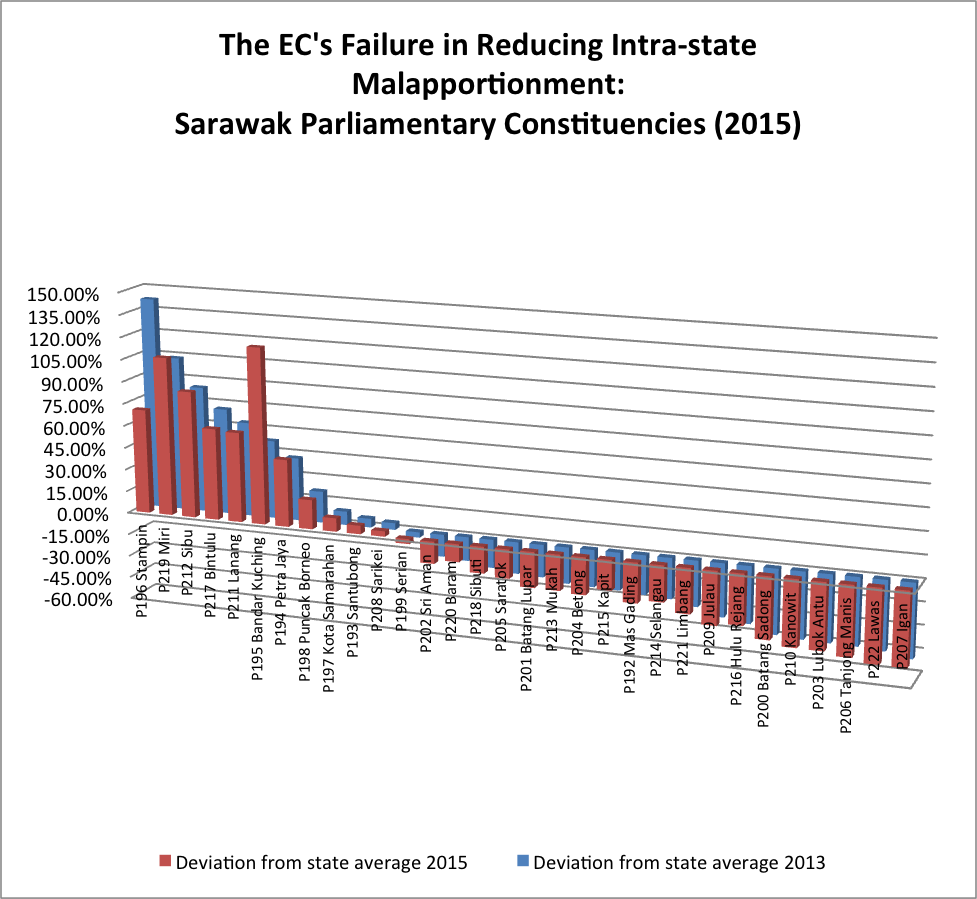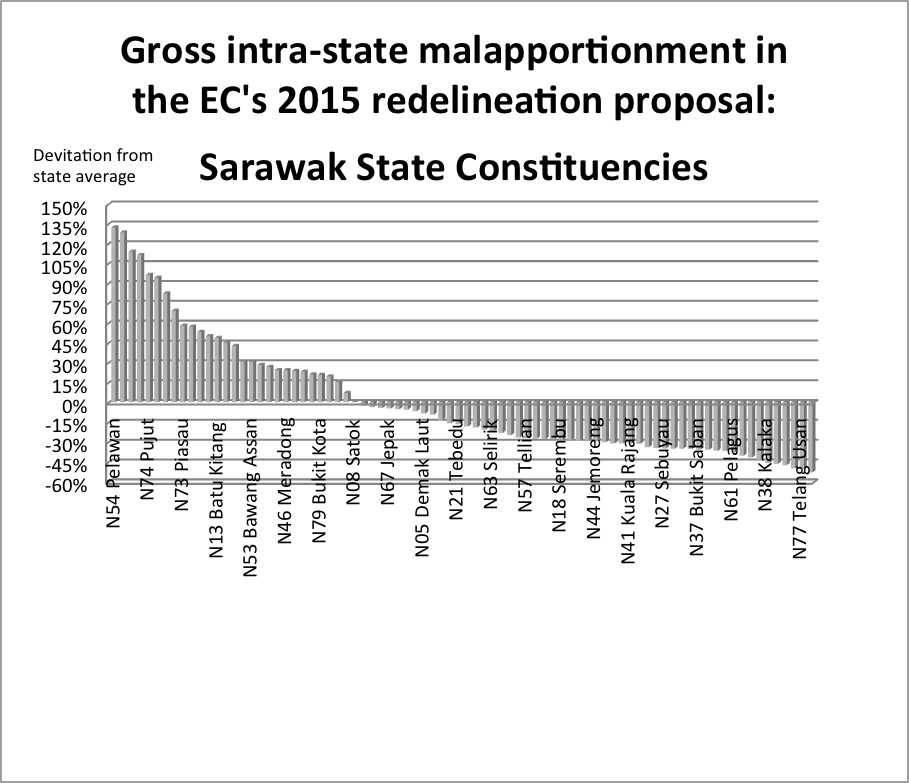BERSIH 2.0 Press Statement (6 January 2015)
The Coalition for Clean and Fair Elections (BERSIH 2.0) condemns the Election Commission (EC) for serious flaws in both the proposal and procedure in the constituency redelineation exercise for Sarawak hastily started yesterday.
The EC must immediately rectify its errors in displaying incomplete maps and gross malapportionment. As our preliminary response on the exercise, we have five questions and one commendation for the EC.
-
Why are the maps incomplete?
 BERSIH 2.0 is shocked that the EC has provided incomplete maps in that polling district boundaries are not shown.
BERSIH 2.0 is shocked that the EC has provided incomplete maps in that polling district boundaries are not shown.
- The normal electoral map consists of boundaries of parliamentary and state constituencies as well as polling districts, as in the sample of the Sibu parliamentary constituency map used in the 2013 General Election (left).
- In comparison, the EC has only released a state-wide map for all constituencies this time round (see right).

Even in the enlarged box B (scale 1: 80,000), the polling districts are not shown.
-
At the first glance, polling districts are sub-divisions within parliamentary and state constituencies; hence, their disappearance does not affect voters in identifying their location. However, in practice, polling districts are the building blocks of parliamentary and state constituencies; hence, voters can mentally redraw the boundaries by including and excluding polling districts, if they were made visible to them.
-
By denying the voters the knowledge of polling district boundaries, the EC is undermining the people’s ability to meaningfully evaluate the EC’s recommendation and consider other possible combinations of polling districts. Hence, the EC maliciously violates the demand of Federal Constitution that “regard ought to be had … to the maintenance of local ties,” (italics ours) as per its Thirteenth Schedule, Part 1, Section 2(d).
-
Without the polling district boundaries, the voters also cannot evaluate whether their polling districts have “administrative facilities” to facilitate voting, as implied by Thirteenth Schedule, Part 1, Section 2(b).
-
Since such incomplete maps were never used in the past, the EC must answer if such maps denotes a new modus operandi for the entire nation, or it is deliberately discriminating against the Sarawakians.
-
We fully support the ultimatum posed by Mr Baru Bian, ADUN for Bakelalan and Sarawak PKR Chief for the EC to provide detailed constituency-level maps within seven days or be prepared for a judicial review hearing.
-
Why are the maps not displayed online?
-
BERSIH 2.0 cannot understand why the EC refuses to put all its maps online so that more people including out-of-town voters can assess the quality of the EC’s redelineation proposal and take part in the objection project.
-
Why does the EC insist on conducting its business in a pre-internet manner?
-
Why can’t the EC do what BERSIH 2.0’s DART (Delineation Action and Research Team) and Tindak Malaysia have been doing—sharing electoral information online? See dart.bersih.org
-
Will the inquiries be open to lawyers, media and all members of the public?
-
BERSIH 2.0 reiterates our call for the inquiries, which must be held in the event of valid objections after the one-month objection period, to be open to lawyers, media and all concerned members of the public.
-
The EC has told political parties in their briefing that every group of objectors is limited to three representatives without legal representation and a session of 30 minutes.
-
BERSIH 2.0 would like to remind the EC that it must act constitutionally in discharging its duty. It should aim to maximise public participation in the redelineation and minimise both malapportionment and gerrymandering.
-
BERSIH 2.0 vows to support legal actions by any citizen who has been unconstitutionally excluded or disadvantaged by the EC.
-
Why is intra-state malapportionment not reduced?
-
BERSIH 2.0 holds that the entire idea of redelineation is to reduce malapportionment and gerrymandering that have occurred since the last redelineation. On this yardstick, the EC has failed miserably.
-
The chart below shows that malapportionment of parliamentary constituencies that appeared in the 13th General Election has hardly been reduced in the proposed redelineation. (Between 2013 and 2014 on which the redelineation was based on, the electorate has grown insignificantly by 2.32% and does not invalidate the comparison.)
-
P195 Bandar Kuching is larger than the state average by 119.11% points, P219 Miri (107.19%) – both are more than twice! They are followed by P212 Sibu (85.51%), P196 Stampin (70.48%), Bintulu (61.79%), Lanang (60.64%) and Petrajaya (45.30%).

-
The EC has completely ignored the requirement of the 13th Schedule, Part 1, 2(c) where constituencies within the same state are supposed to be “approximately equal” in size, with exceptions given to inland constituencies.
- For BERSIH 2.0, normal constituencies should not be larger or smaller than the state average by 15%, which was the original standard set in the 1957 Federal Constitution and the exceptional constituencies should be as far as possible not smaller than the state average by 33%, which was the 1962 constitutional standard.
- While this means some seats like Hulu Rejang or Baram can be much smaller than the state average, there are no grounds for outliers at the higher end, resulting in gross under-representation of urban voters.
- Even amongst the inland constituencies, one may ask whether it is justified to have fewer voters in P206 Tanjong Manis (19,025) and P207 Igan (18,082), which are coastal and smaller in geographical spread, than P216 Hulu Rejang (23,637) and P220 Baram (31,476), which are Sarawak’s largest and second largest constituencies in land mass.
- Overall, in the EC’s proposal, only six out of Sarawak’s 31 parliamentary constituencies meet the 1957 standard, nine more meet the 1962 standard and the remaining 16 fail even the 1962 standard. (See Appendix 1)
- We urge the constituents in the 27 proposed state constituencies that are larger than the state average by 15% to object to their unconstitutional under-representation as a group of 100 or more affected voters in the one-month period ending February 4th.
- Similarly, the state constituencies are severely malapportioned. While the average state constituency has 13,526 voters, the following constituencies are more than or nearly twice the average size (percentages show deviation from the state average):
-
N54 Pelawan
31,388
132.06%
N10 Pending
30,881
128.31%
N51 Bukit Asek
28,908
113.72%
N52 Dudong
28,569
111.22%
N74 Pujut
26,532
96.16%
N75 Senadin
26,257
94.12%
N11 Batu Lintang
24,640
82.17%
Overall, in the EC proposal, only 12 out of Sarawak’s 82 state constituencies meet the 1957 standard, 24 more meet the 1962 standard and the remaining 46 fail even the 1962 standard. (See Appendix 2)
- Again, while very small inland constituencies may be justified, outliers at the higher end are absolutely unconstitutional. The voters of the abovementioned constituencies and 20 others that are larger than the state average by 15% should object to their unconstitutional under-representation as a group of 100 or more affected voters in the one-month period ending on February 4th.

